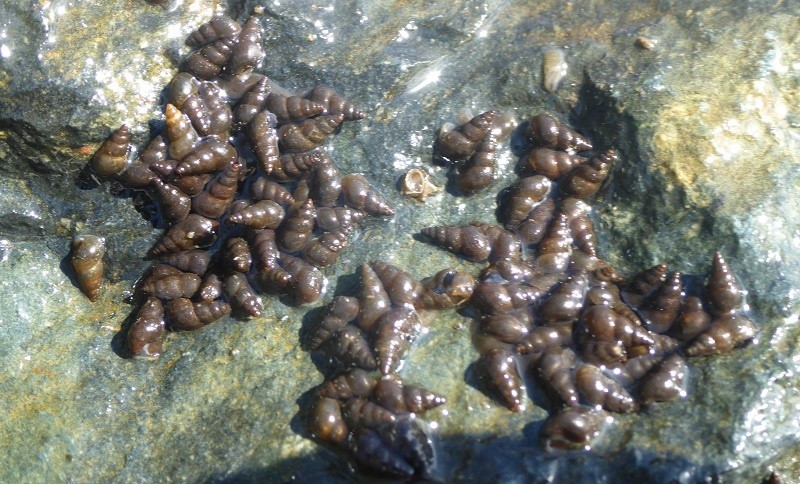
An emerging threat of alarming proportions now lurks in the depths of the Sierra Nevada's blue waters.
The invasive New Zealand mud snail has unexpectedly found its way into the pristine waters of Lake Tahoe, alarming many throughout the region.
A Tiny Intruder
A California Department of Fish and Wildlife (CDFW) release tells us that divers monitoring Lake Tahoe's South Shore recently made a shocking discovery: invasive New Zealand mud snails, previously unseen in the Tahoe Basin.
These tiny creatures, the size of grains of sand, are causing quite a stir among conservationists and scientists alike.
Measuring a mere four to six millimeters in length, these tiny snails might seem inconsequential at first glance. However, they possess a remarkable ability to reproduce rapidly.
Experts warn that a mature female mud snail can birth a staggering 230 offspring each year, leading to exponential population growth.
In fact, experts estimate that a single snail, along with its descendants, could potentially result in over 2.7 billion snails within just four years - making them a highly problematic aquatic species.
Invasive Species
The New Zealand mud snail's journey to Lake Tahoe remains shrouded in mystery.
KTLA reports that it was first spotted in the United States in 1987 in Idaho, and it has since spread its presence to 22 states, including California, Nevada, and Colorado, not to mention infiltrating the Great Lakes region.
Originally native to freshwater bodies in New Zealand, the snail's rapid expansion raises questions about its impact on local ecosystems.
Lake Tahoe, renowned for its breathtaking beauty, is both a highly protected natural wonder and a crucial component of California and Nevada's tourism industry.
With visitors flocking to the region throughout the year to enjoy its scenic beauty, any disruption to its ecosystem could have far-reaching consequences.
Read Also : Biological Annihilation Era: Study Reveals Human Activities Speed Up Extinction of Animal Species
The Danger Within
While they may appear harmless, New Zealand mud snails significantly threaten Lake Tahoe's delicate balance.
These invaders lack natural predators or controls, enabling them to outcompete native species and disrupt vital ecosystem functions.
Of particular concern is their potential impact on aquatic insects, which serve as a crucial food source for trout and salmon populations within the lake.
Eradication Challenges
Once New Zealand mud snails establish themselves in a new habitat, eradication becomes nearly impossible without causing harm to other components of the ecosystem.
This grim reality underscores the urgency of addressing the issue proactively and implementing strict preventive measures.
Guarding Against Further Spread
Prevention is the best defense against the invasive snail's relentless march. Phys.org shares in a report that authorities and experts urge boaters, anglers, and visitors to adopt a "clean, drain, and dry" approach.
This means thoroughly cleaning and drying all recreational equipment, fishing gear, and clothing that come into contact with the lake.
Additionally, freezing equipment like waders and wading boots overnight, inspecting gear after use, removing visible snails, and refraining from transporting live fish or other aquatic organisms between water bodies are all essential to mitigate the spread of the New Zealand mud snail.
Stay posted here at Tech Times.
Related Article : This Genetically Engineered Bacteria Can Degrade Plastics-Can It Clean Our Oceans?

ⓒ 2026 TECHTIMES.com All rights reserved. Do not reproduce without permission.




